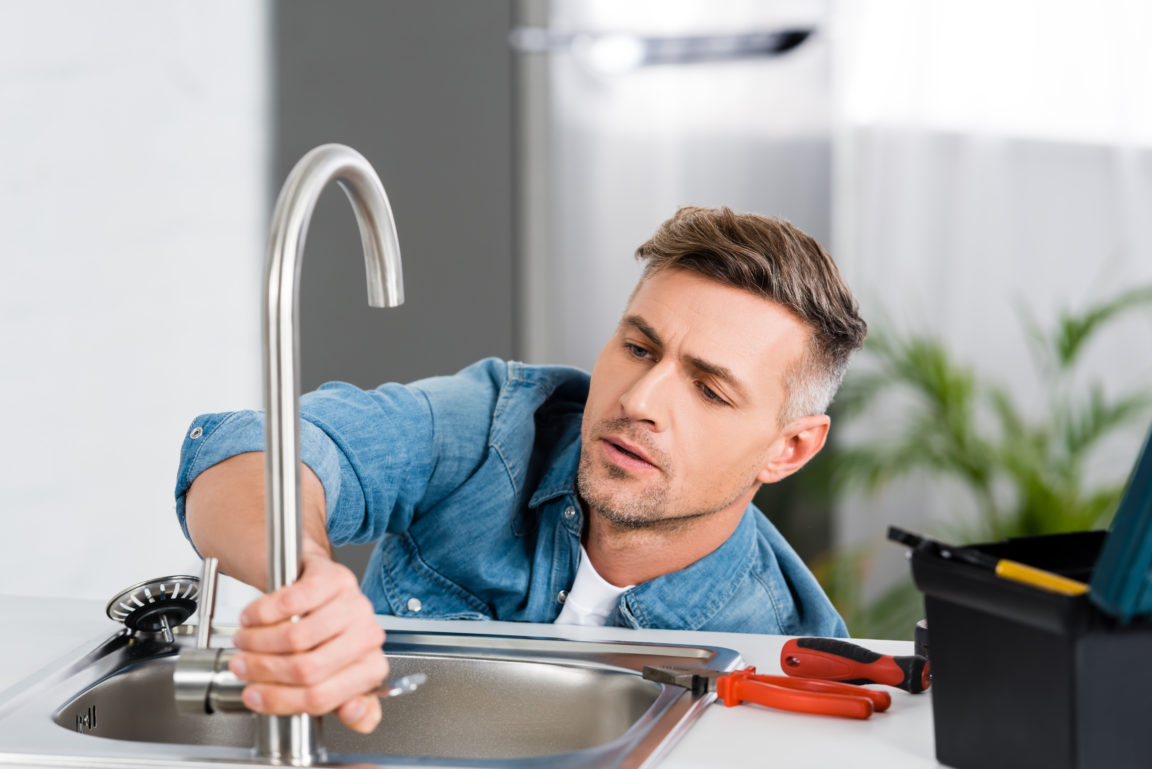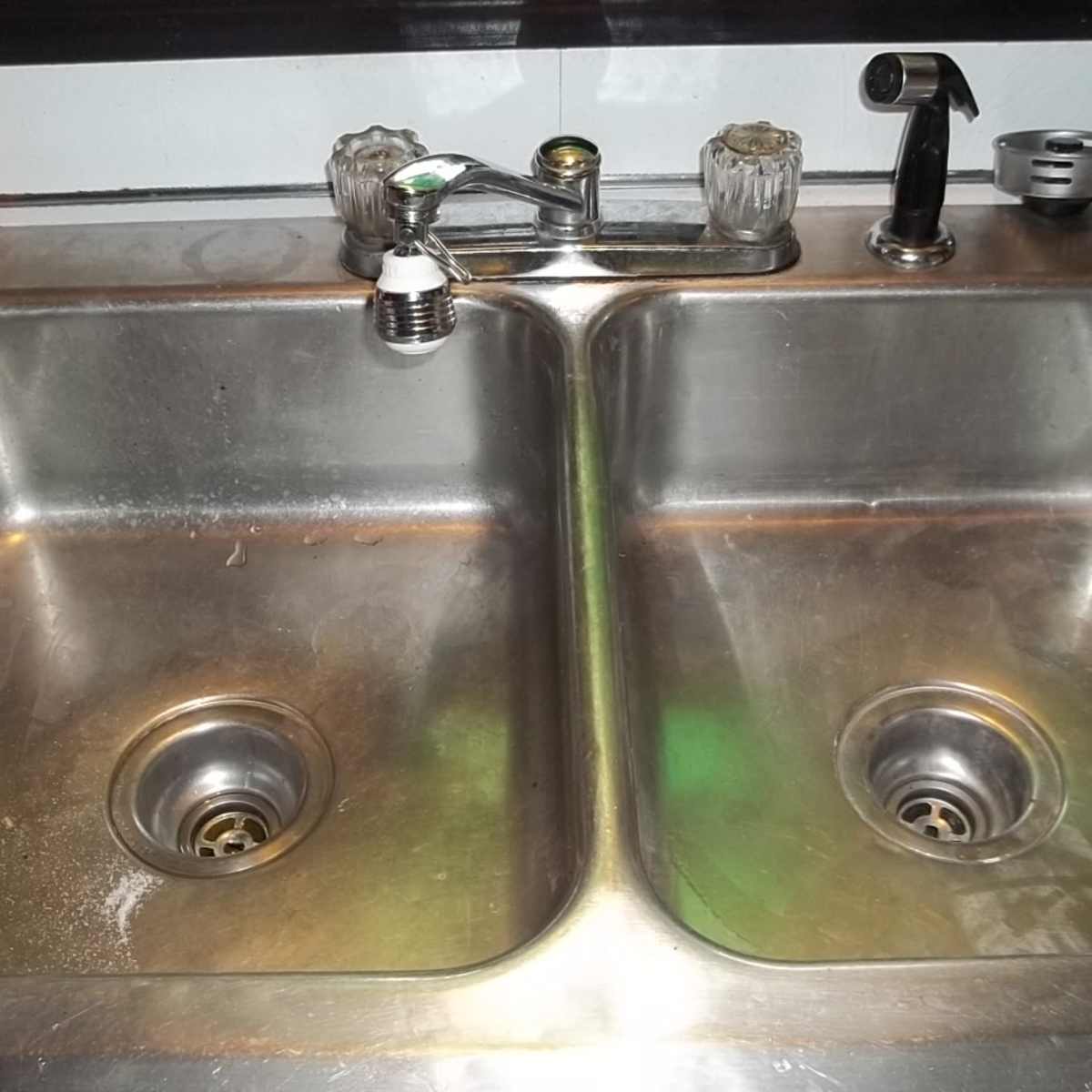Each person has their own unique perception involving Repairing Common Household Plumbing Issues.

In this post, we will be taking a look at 5 straightforward steps you could require to free your kitchen area sink from clogs as well as conserve you from the pain as well as humiliation of dealing with a clogged kitchen area sink.
Obstructed kitchen sinks are among the most usual water drainage concerns home owners face. And also what's even more, it's a unpleasant and extremely awkward view. Imagine going to the sink to do your dishes and discovering that the drain is obstructed as well as water can not flow down quickly.
Most blocked drainages are brought on by food particles, oil, soap, and fat fragments. They block the sink and also make it hard for water to decrease the drain promptly. While it is tempting to put a call through to the plumbings, there are a couple of DIY hacks you could attempt initially before making that phone call.
1. Baking Soda and Vinegar
Instead of making use of any kind of type of chemicals or bleach, this approach is safer and also not hazardous to you or your sink. Baking soda as well as vinegar are day-to-day house products made use of for lots of other points, as well as they can do the method to your kitchen sink.
Firstly, remove any kind of water that is left in the sink with a cup.
Then put a great amount of cooking soda down the drain.
Pour in one cup of vinegar.
Seal the drain opening as well as enable it to opt for some minutes.
Pour hot water down the drain to disappear other stubborn residue and also fragments.
Following this easy technique could suffice, and also you can have your kitchen area sink back. Repeat the process as high as you deem necessary to rid the sink of this particles entirely.
2. Try a Plunger
If the problem is not from the garbage disposal, you can attempt using a bettor. Bettors are common residence tools for this celebration, and they can come in handy if you utilize them effectively. A flat-bottomed bettor is most ideal for this, but you can use what you have is a toilet plunger.
Follow the list below simple steps to use the bettor successfully:
Secure the drain with a rag and also fill the sink with some warm water
Place the bettor in position over the drain and begin plunging
Check to see if the water runs easily after a few plunges
Repeat the procedure till the water drainage is free
3. Possibly it's the Garbage Disposal
In many instances, the blockage may be due to a blockage in the disposal. Use pliers instead.
If this does not function, you can check out the following alternative to unblock your kitchen sink.
4. Utilize a Hanger
This trick is efficient as well as innovative, specifically if you recognize as well as perhaps see what's creating the obstruction. Occasionally, the blockage could be brought on by hair, jewelry, or massive chunks of food fragments. Making use of a wire towel hanger or a plumber's serpent if you have one can do the method. All you need do is align the hanger to drop the drainpipe while you thoroughly choose the particles creating the obstruction.
Run hot water away hereafter to see exactly how effective you were.
5. Usage Boiling Water
When confronted with a stopped up sink, the first thing you need to try is to put boiling thin down the drain. That has to do with one of the most simple treatment to blocked sinks as well as drainages. Boiling water assists reduce the effects of the bits and also debris causing the blockage, particularly if it's grease, oil, or soap particles, and in many cases, it can flush it all down, as well as your sink will be back to regular.
Do not attempt this technique if you have plastic pipelines (PVC) due to the fact that warm water might melt the lines as well as create more damage. You may desire to stick to utilizing a bettor to obtain debris out if you utilize plastic pipes.
Using this technique, activate the faucet to see how water flows after putting warm water down the drain. Attempt the procedure once again if the obstruction lingers. The blockage could be much more consistent in some situations and require even more than simply boiling water.
Final Words
Trying these few techniques could conserve you the expenses of having a plumber check it. In numerous situations, a plumber is what we need. In cases where you find it difficult to unblock the sink even after attempting all these approaches, it might be time to leave it to the professionals.
Call professional plumbing business to repair your drain issues and also other various household plumbing needs.
Obstructed cooking area sinks are one of the most typical drainage concerns house owners face. Picture going to the sink to do your meals and finding out that the drainpipe is blocked and also water can not move down conveniently.
They block the sink as well as make it hard for water to go down the drainpipe promptly. When encountered with a stopped up sink, the very first thing you must try is to pour boiling water down the drain. Boiling water assists counteract the bits and debris causing the clog, specifically if it's grease, soap, or oil fragments, and in lots of instances, it can flush it all down, and your sink will certainly be back to regular.
How to Unclog a Kitchen Sink
Take the Plunge
Start your efforts by plunging. Use a plunger with a large rubber bell and a sturdy handle. Before getting to work on the drain, clamp the drain line to the dishwasher. If you don t close the line, plunging could force dirty water into the dishwasher.
Fill the sink with several inches of water. This ensures a good seal over the drain.
If you have a double sink, plug the other drain with a wet rag or strainer.
Insert the plunger at an angle, making sure water, not air, fills the bell.
Plunge forcefully several times. Pop off the plunger.
Repeat plunging and popping several times until the water drains.Clean the Trap
The P-trap is the curved pipe under the sink. The trap arm is the straight pipe that attaches to the P-trap and runs to the drain stub-out on the wall. Grease and debris can block this section of pipe. Here s how to unclog a kitchen sink by cleaning out the trap:
Remove as much standing water from the sink as possible.
Place a bucket under the pipe to catch the water as it drains.
Unscrew the slip nuts at both ends of the P-trap. Use slip-joint pliers and work carefully to avoid damaging the pipes or fasteners.
If you find a clog, remove it. Reassemble the trap.
If the P-trap isn t clogged, remove the trap arm and look for clogs there. Run the tip of a screwdriver into the drain stub-out to fetch nearby gunk.Spin the Auger
With the trap disassembled, you re ready to crank the auger down the drain line.
Pull a 12-inch length of cable from the auger and tighten the setscrew.
Insert the auger into the drain line, easing it into the pipe.
Feed the cable into the line until you feel an obstruction. Pull out more cable if you need to.
If you come to a clog, crank and push the cable until you feel it break through. The cable will lose tension when this happens.
Crank counterclockwise to pull out the cable, catching the grime and debris with a rag as the cable retracts.

I'm just very fascinated by Fixing Typical Household Plumbing Problems and I am praying you enjoyed reading our post. So long as you enjoyed our blog posting please make sure you remember to pass it around. Thanks a bunch for your time. Please visit our blog back soon.
Pro service? Ring!